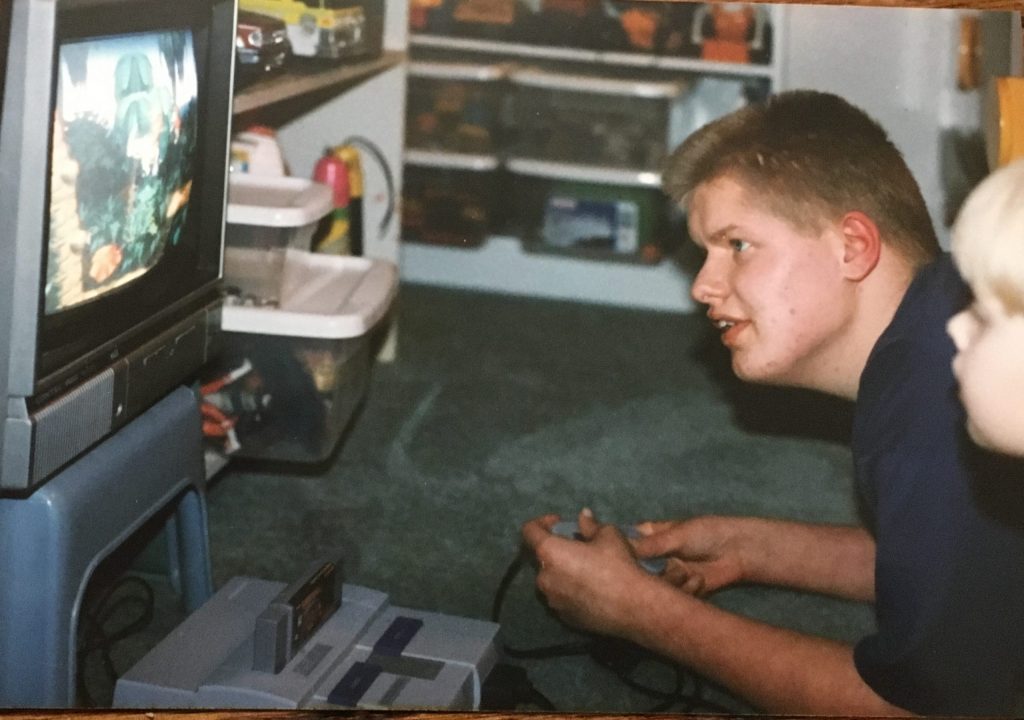Back in 1997 when Nick was 18, all the other kids were playing Nintendo video games. Nick especially liked Super Mario Brothers. He kept asking everyone if he could play with them. The kids were very competitive and liked to see who could reach the highest levels, while collecting items and not dying. They didn’t always want to share game time with Nick. He spent many afternoons in front of the TV with the other kids, as a spectator.
He would always laugh when someone playing the game “died.” He thought that was funny. Sometimes he would be handed a controller by one of the kids who was looking for a break from the action and Nick would press the forward button until he also “died.” Gradually he also learned to make the characters jump to avoid obstacles, which made it so he could play a little longer. But eventually he would miss an obstacle and he would say, “I die again, oh well.” And then he would ask the other kids, “You make me alive again?” which meant, please restart the game for me.
The picture with this blog was taken in 1997. Nick had wanted to play Nintendo and everyone was busy. He didn’t know how to turn on the TV and start the game and he wanted to play. So he asked his three year old cousin Eli to turn the game on. I was in the other room listening to see what would happen. Not surprisingly, Eli knew just what to do and Nick knew how to play once everything was on. It showed great teamwork by both of them.
Sometimes Nick needed to be able to make the character go backwards or he would die. No matter how much instruction he received from his siblings, he didn’t understand the concept of the multi-directional button on the NES controller. (I still can’t make it work consistently either.) He could make the character go forward and he understood jumping.
One day we noticed that he was going along playing the game and all of a sudden he flipped the controller upside down while still pushing the button with his thumb in the same manner as before, only since the controller was flipped around, the character now was going backwards on the screen.
We never did discover how he learned to do that. From then on whenever he needed his character to back away from something, he would flip the controller around and make the character change direction. It was as if he could only press the button in one direction with his thumb, so he adapted the controller rather than trying to get his hand to work differently. It was amazing to watch.
Nick has taught me to look for alternate solutions when the pathway seems blocked. He has been a great example to me and to others.
Please share this blog if it resonates with you or you know someone who might benefit from it. If you want to get a copy of the book as soon as it is available, click here to sign up.


